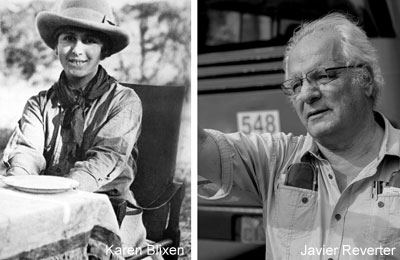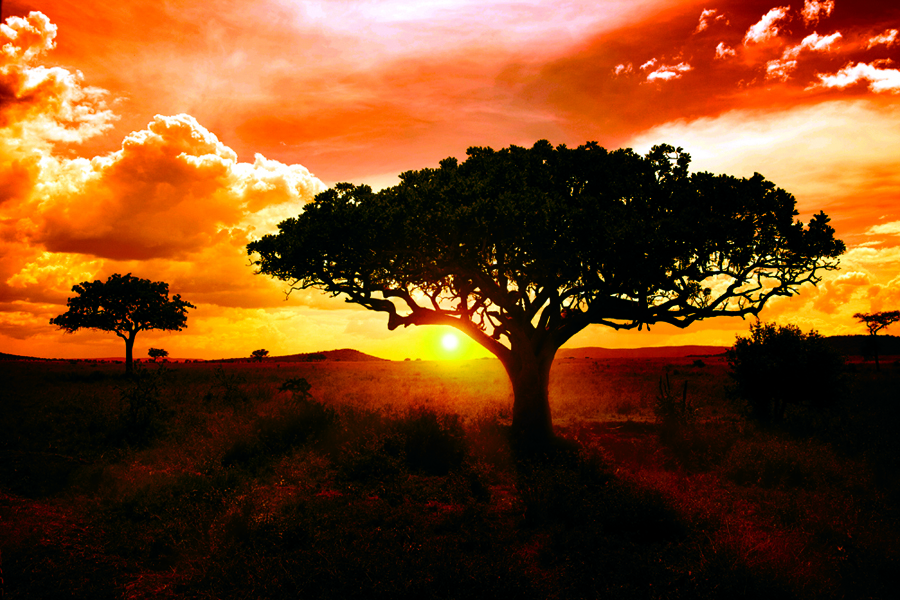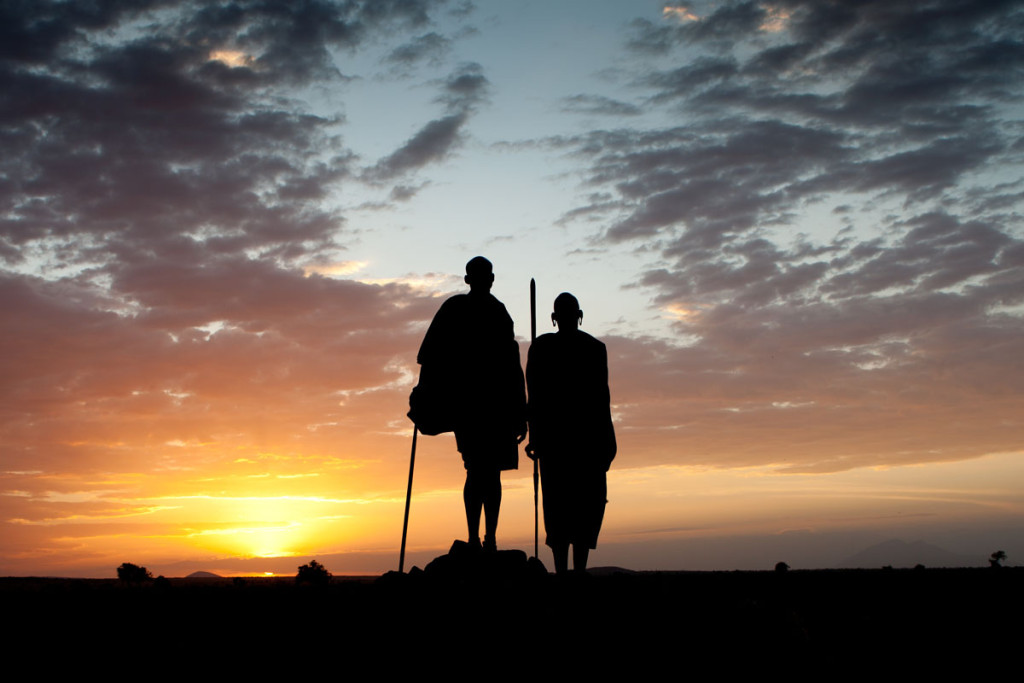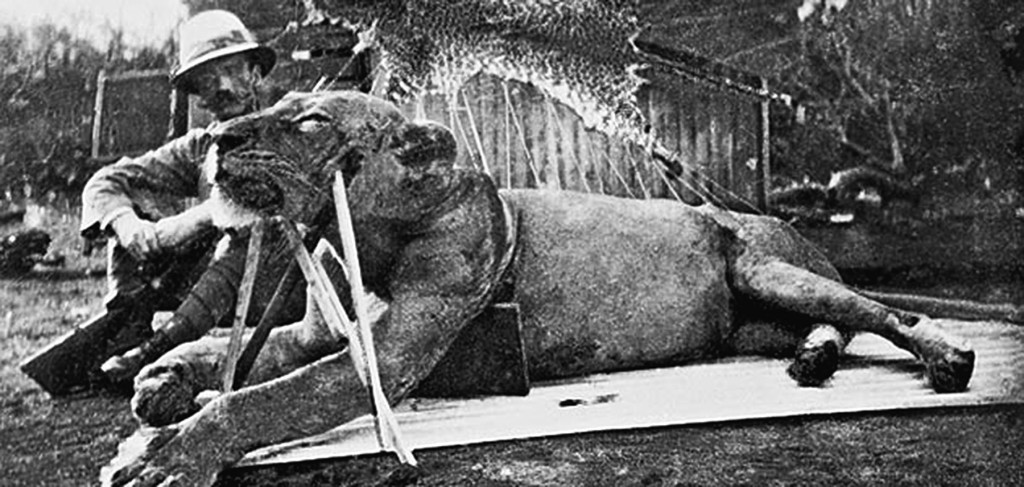Writer Tito Vivas, Director general de Sociedad HISTÓRICA.
Viaje a la Kenia de Karen Blixen FROM DECEMBER 26th, 2015 TO 4th JANUARY 4th, 2016
 “I had a farm in Africa, at the foot of the Ngong Hills” is one of the most famous quotes given by the romantic literature. So begins Out of Africa, the novel published by Karen Blixen in 1937, who went to Kenya with her husband to grow coffee and, atfer her divorce, she lived there until 1931. Her relationship with the hunter and lover Denys Finch-Hatton and her passion for Africa during those years inspired the film directed by Sydney Pollack and starring Robert Redford and Meryl Streep. The writer Javier Reverte and the travel agency SOCIEDAD HISTÓRICA have organized an expedition to revive the union between Karen and Africa, the scenarios where she spent her life in Kenya and her relationship with Denys Finch-Hatton. This is the adventure.
“I had a farm in Africa, at the foot of the Ngong Hills” is one of the most famous quotes given by the romantic literature. So begins Out of Africa, the novel published by Karen Blixen in 1937, who went to Kenya with her husband to grow coffee and, atfer her divorce, she lived there until 1931. Her relationship with the hunter and lover Denys Finch-Hatton and her passion for Africa during those years inspired the film directed by Sydney Pollack and starring Robert Redford and Meryl Streep. The writer Javier Reverte and the travel agency SOCIEDAD HISTÓRICA have organized an expedition to revive the union between Karen and Africa, the scenarios where she spent her life in Kenya and her relationship with Denys Finch-Hatton. This is the adventure.
 You have the feeling that Karen Blixen is going to appear in the saloon of the Muthaiga Country Club. As that April 5th, 1918, Blixen went to this exclusive club, meeting place of the expatriate ruling elite of the metropolis in British East Africa, to participate in the social life that African colony could offer. She met Denys Finch-Hatton (Robert Redford) there, a handsome and haughty hunter. The club remains today in the Kenyan capital providing the same ashy taste of yesteryear. Its spacious living room, bar and dining room still safeguard the reveries of melancholy travelers.
You have the feeling that Karen Blixen is going to appear in the saloon of the Muthaiga Country Club. As that April 5th, 1918, Blixen went to this exclusive club, meeting place of the expatriate ruling elite of the metropolis in British East Africa, to participate in the social life that African colony could offer. She met Denys Finch-Hatton (Robert Redford) there, a handsome and haughty hunter. The club remains today in the Kenyan capital providing the same ashy taste of yesteryear. Its spacious living room, bar and dining room still safeguard the reveries of melancholy travelers.
 The vast hacienda of Karen Blixen (Meryl Streep) has become a museum. Made of stone, red roof and white woodwork in the idyllic porch which surrounds the house, and with large windows that are open into the hills. The furniture, books, furnishings and artifacts accumulated during their African life are still exposed in these spaces and corners, where you can see the travelers from the red velvet rope. And once inside, as happened in Muthaiga, we expect to see through the windows the ghost of Denys Finch-Hatton with his rifle under his arm. Or some little Kikuyu in the garden, as the writer said: “I used to meet the children’s sharecroppers because they worked for me on the farm and because they used to haunt my house, leaving their goats to pasture in the meadow, waiting for the happening of something of interest”.
The vast hacienda of Karen Blixen (Meryl Streep) has become a museum. Made of stone, red roof and white woodwork in the idyllic porch which surrounds the house, and with large windows that are open into the hills. The furniture, books, furnishings and artifacts accumulated during their African life are still exposed in these spaces and corners, where you can see the travelers from the red velvet rope. And once inside, as happened in Muthaiga, we expect to see through the windows the ghost of Denys Finch-Hatton with his rifle under his arm. Or some little Kikuyu in the garden, as the writer said: “I used to meet the children’s sharecroppers because they worked for me on the farm and because they used to haunt my house, leaving their goats to pasture in the meadow, waiting for the happening of something of interest”.
 The Kikuyu was the tribe who lived in the farmland that acquired this married in early 1914 using family money to establish a coffee plantation. Today they are the largest ethnic group in Kenya, comprising the 20% of the total population. Karen described them as a people “prepared for the unforeseen and accustomed to the unexpected. […] On good terms with fate, because their whole life is always in their hands; it is their home, the family’s penumbra of the hut, the deep mold of their roots”.
The Kikuyu was the tribe who lived in the farmland that acquired this married in early 1914 using family money to establish a coffee plantation. Today they are the largest ethnic group in Kenya, comprising the 20% of the total population. Karen described them as a people “prepared for the unforeseen and accustomed to the unexpected. […] On good terms with fate, because their whole life is always in their hands; it is their home, the family’s penumbra of the hut, the deep mold of their roots”.
 Neighbors of the Kikuyu and protagonists of the life of Karen Blixen and Denys Finch-Hatton are the Maasai. Nearby commercial ties have maintained a good balance between the two ethnic groups. Only colonialism was able to swamp the relations between them. The Danish woman, nicknamed “the lioness sister” was greatly by the people, for her human condition, her inclination to the respect of local traditions, the learning of the Swahili language and her work as a healer of diseases. But also for her skill as hunter, hobby that she shared, or perhaps was inspired, with Finch-Hatton. The Masai Mara reserve was one of her usual hunting grounds because of its rich fauna. The same which today attracts hordes of tourists for spotting the “Big Five” (lion, leopard, African elephant, African buffalo and black rhino). One of the most curious experiences is to observe the «adumu», the exuberant Maasai dance, performed when the young warriors become «elmoranes», “the most pampered group of Maasai society”, as Reverte says. The boys have to jump as high as possible while their mothers sing in honor of their children. The tribe has no doubts in inviting the entertained tourists to try this tired dance. And there’s always a daring volunteer.
Neighbors of the Kikuyu and protagonists of the life of Karen Blixen and Denys Finch-Hatton are the Maasai. Nearby commercial ties have maintained a good balance between the two ethnic groups. Only colonialism was able to swamp the relations between them. The Danish woman, nicknamed “the lioness sister” was greatly by the people, for her human condition, her inclination to the respect of local traditions, the learning of the Swahili language and her work as a healer of diseases. But also for her skill as hunter, hobby that she shared, or perhaps was inspired, with Finch-Hatton. The Masai Mara reserve was one of her usual hunting grounds because of its rich fauna. The same which today attracts hordes of tourists for spotting the “Big Five” (lion, leopard, African elephant, African buffalo and black rhino). One of the most curious experiences is to observe the «adumu», the exuberant Maasai dance, performed when the young warriors become «elmoranes», “the most pampered group of Maasai society”, as Reverte says. The boys have to jump as high as possible while their mothers sing in honor of their children. The tribe has no doubts in inviting the entertained tourists to try this tired dance. And there’s always a daring volunteer.
 Amboseli, the highest mountain of the continent, has the Tanzanian passport and a VIP box at the foot of Kilimanjaro.
Amboseli, the highest mountain of the continent, has the Tanzanian passport and a VIP box at the foot of Kilimanjaro.
 Yet although Finch-Hatton spent large hunting seasons around here, if his ghost wanders somewhere, is in Tsavo, the largest park in Kenya. There, Denys Finch-Hatton and many other professional hunters have amassed large fortunes organizing hunting parties for eccentric wealthy of the first world that come to claim their almost obliged trophies of ivory or peel.
Yet although Finch-Hatton spent large hunting seasons around here, if his ghost wanders somewhere, is in Tsavo, the largest park in Kenya. There, Denys Finch-Hatton and many other professional hunters have amassed large fortunes organizing hunting parties for eccentric wealthy of the first world that come to claim their almost obliged trophies of ivory or peel.
 In May 14th, 1931, in the heart of Tsavo, blast off a biplane called Gypsy Moth. Was piloted by Finch-Hatton, and he was accompanied by his servant Kikuyu Kamau in the rear compartment of the fuselage. In a short of raising, the plane circled twice around the airport and, suddenly, fell apart, bursting into a cloud of fire that swept away the life of both occupants. Karen Blixen was who took care of the funeral of his lover, even though had appeared on the scene, at that time, a new edge of a love triangle with Beryl Markham, horse trainer in Nairobi and great passionate of aviation who started a clandestine relationship with him. In fact, who must take up the place of Kamau in that unfortunate plane that morning was her. But Markham refused the invitation -she confessed in his book- because of a bad omen of his flight instructor. Today, the body of Finch-Hatton rests on a ridge of the Ngong hills according to his own desire.
In May 14th, 1931, in the heart of Tsavo, blast off a biplane called Gypsy Moth. Was piloted by Finch-Hatton, and he was accompanied by his servant Kikuyu Kamau in the rear compartment of the fuselage. In a short of raising, the plane circled twice around the airport and, suddenly, fell apart, bursting into a cloud of fire that swept away the life of both occupants. Karen Blixen was who took care of the funeral of his lover, even though had appeared on the scene, at that time, a new edge of a love triangle with Beryl Markham, horse trainer in Nairobi and great passionate of aviation who started a clandestine relationship with him. In fact, who must take up the place of Kamau in that unfortunate plane that morning was her. But Markham refused the invitation -she confessed in his book- because of a bad omen of his flight instructor. Today, the body of Finch-Hatton rests on a ridge of the Ngong hills according to his own desire.
 The next stop of the expedition is Mombasa, where “you capture almost immediately the hard and vigorous character of the city, […] irreductible, that makes it different from all parts of Africa”, as one reads in The Dream of Africa. There is the most legitimate transport station that the traveler who is looking for the ghosts of the colonial era can take: the «Lunatic Train». In 1895, the British government organized a plan to open a railway line in East Africa from Mombasa to inside Uganda, in the Lake Victoria basin, across the Rift Valley. An almost utopic company that Winston Churchill named “bright idea”. Because of the unstable wooden bridges, huge deeps, prohibitive prices that duplicated the initial budget, the hostile tribes (including Kikuyu and Maasai, who saw their land was expropriated), men infected with hundreds of diseases, and wild beasts, the project earned the nickname «Lunatic Express». And yet, it was built.
The next stop of the expedition is Mombasa, where “you capture almost immediately the hard and vigorous character of the city, […] irreductible, that makes it different from all parts of Africa”, as one reads in The Dream of Africa. There is the most legitimate transport station that the traveler who is looking for the ghosts of the colonial era can take: the «Lunatic Train». In 1895, the British government organized a plan to open a railway line in East Africa from Mombasa to inside Uganda, in the Lake Victoria basin, across the Rift Valley. An almost utopic company that Winston Churchill named “bright idea”. Because of the unstable wooden bridges, huge deeps, prohibitive prices that duplicated the initial budget, the hostile tribes (including Kikuyu and Maasai, who saw their land was expropriated), men infected with hundreds of diseases, and wild beasts, the project earned the nickname «Lunatic Express». And yet, it was built.
 Patterson at the bridge during its construction
Patterson at the bridge during its construction
About wild beasts and unstable bridges highlights the history of another ghost that haunts moonless nights of the route of this train: that of Lieutenant Colonel John Henry Patterson. This engineer of the British army arrived to Kenya in 1898 to deal with the construction of a bridge over the Tsavo River.
 Patterson with the second of the great lions killed
Patterson with the second of the great lions killed
And ended going down in history as being responsible for the deaths of two man eaten up by lions that have kidnapped and devoured tens of railway construction workers. Most of them were «culis», porters and low-skilled workers moved by the colony from India. The two wild beasts, now dissected, are exposed in the Field Museum of Natural History in Chicago. But its claws were as a trophy in the Railway Museum in Nairobi, in which ends this journey in search of ghosts of the past.
www.sociedadhistorica.com
Contact / Submissions
info@magazinehorse.com




